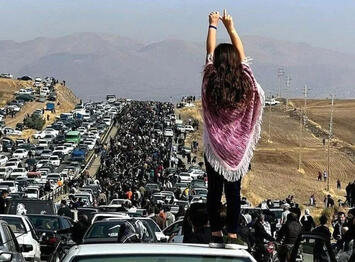
On 16 September 2022 the 22-year-old Mahsa Amini died in a hospital in Tehran following her arrest by Iran’s Guidance Patrol. Although the details surrounding her death has been disputed, given that she suffered from previous brain injuries (later acknowledged by her family’s lawyer), the event sparked protests and spoke to an underlying anger within Iranian Society.
Iranian women started protesting with the Slogan, “Zan, Zendegi, Azadi” – “Women Live, Freedom” and they were joined by the Iranian diaspora in cities like San Francisco, Toronto, Brussels, Berlin, Paris and New York. Much like the Black Lives Matter protests that swept through the United States in the aftermath of the death of George Floyd – the nuanced details of Mahsa Amini’s death no longer mattered, as the movement spoke to systemic issues within the society.
To the protestors, the Hijab symbolizes the status of women in general as Iran still upholds laws and practices like the following that are outright discriminatory.
- Laws that forbid married women from leaving Iran without their husband’s consent.
- Legislation that makes it difficult for women to file for a divorce as they risk losing the custody of their children to the father once the children are older than seven.
- Laws and practices that prevent women from getting married without their father’s permissions.
- All girls over 7 years old are required to wear a headscarf when going to school, with the practice being mandatory in public from the age of 9
There are however signs of reform within Iranian society as since 2019 Iran abolished a law that prevented Iranian women who marry foreigners to pass citizenship onto their children. A 2018 survey published by Iran’s Parliamentary Research Center (PRC) showed that between 60 to 70% of Iranian women do not follow ” the Islamic dress code” strictly in public”. The report also noted that positive attitudes to the dress code has been steady falling since 1992 and proposed the repealing of Iran’s hijab as the measure was clearly counterproductive.
“The PRC also proposed repealing Iran’s hijab law as one of five approaches the state could adopt to counter waning support of the hijab, arguing that the state’s aim of getting people to embrace it could be achieved in more subtle ways.”
The debate in Iran opened up in recent times with calls for reform that included a former Iranian President, a former Mayor of Tehran, the Grandson of Ayatollah Khomeini, a former brigadier general of the Revolutionary Guard Corps and a senior Islamic Cleric.
Read the rest of this piece at: Lay of the Land.
Hügo Krüger is a South African born Structural/Nuclear Engineer, writer and YouTube podcaster, commentating on topics relating to Energy and Geopolitical Matters, Hügo is married to an Iranian born Mathematician and Artist; the couple resides in Paris.
Photo: courtesy Lay of the Land.












